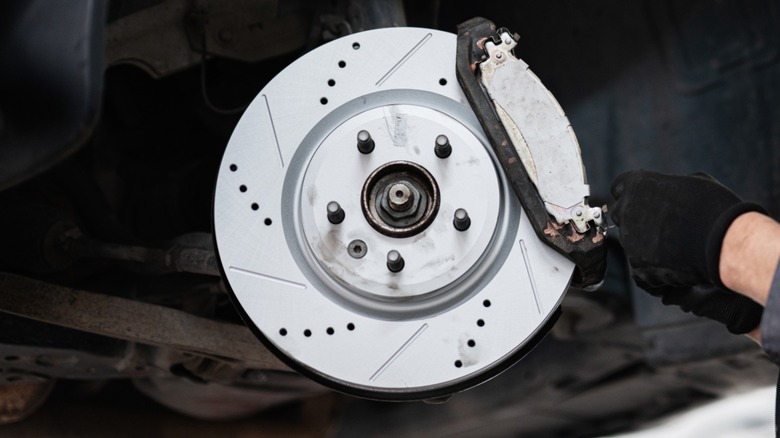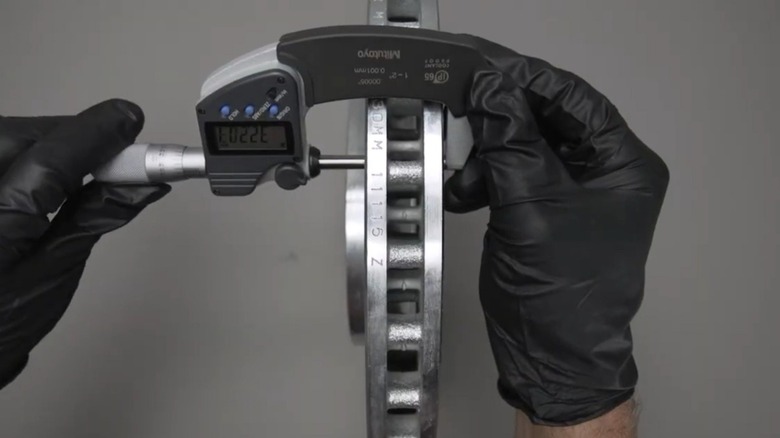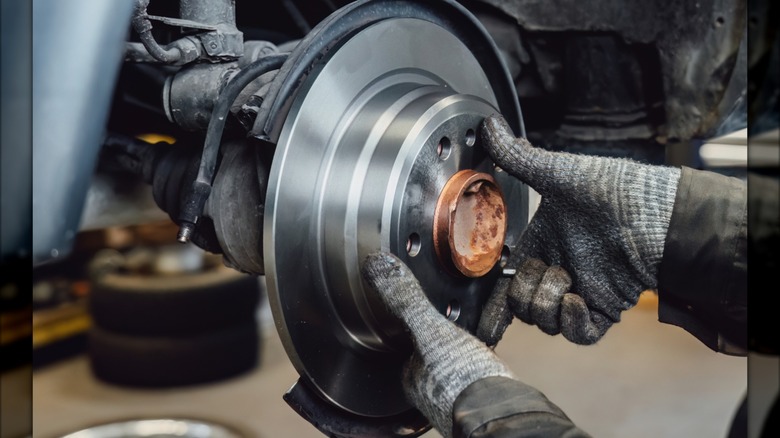Do You Need To Replace Rotors Every Time You Replace Brake Pads & How Difficult Is It To Do Yourself?
Over the past 45 years I've performed brake jobs on everything from race cars to heavy-duty pickup trucks and motorcycles. While changing the brake shoes on a vehicle with drum brakes is more intricate, replacing brake pads and rotors on a disc brake-equipped vehicle is an easy DIY project. However, there are some things to consider if you're going to tackle the project yourself for the first time.
One of the first things to consider is the type of brake pads you'll use to replace your vehicle's worn pads. We'll save that discussion for another time, but the material you choose could impact whether or not you have to replace your rotors sooner, or later.
As for the topic at hand, when to replace your rotors, you don't have to replace them just because you're replacing your brake pads. The condition of your rotors, and whether or not they still comply with your vehicle's manufacturing specifications, determines if you must replace the brake rotors when doing a brake job.
One time I did the brakes on my personal car, replacing the pads and rotors due to wear. I tried to save money on the pads by not buying the best option and immediately regretted it as they left brake dust on the wheels and produced excessive noise when stopping. After just a couple hundred miles I decided to change the pads again but the rotors were still in pristine condition so I left them on and the brakes performed flawlessly.
Deciding whether to reuse or replace brake rotors
In some cases, the automaker that produced your vehicle may require new rotors with every new set of brake pads. Aside from that scenario, you'll likely have a choice between having your old brake rotors resurfaced and buying new ones when you replace the brake pads. These factors impact how much you'll actually end up paying to fix the brakes on your car.
As mentioned, the deciding factor between reusing your rotors and buying new is their condition. The old rotors could have scratches, pits, or uneven surfaces often referred to as warping. If the surface of the old rotors can be restored by resurfacing, a process that requires a specialized machine called a brake lathe operated by a trained technician, without becoming thinner than the specifications allow, they can be reused.
If the damage is too deep or the wear too excessive, the rotor will become too thin and out of spec during the resurfacing. At that point buying a new brake rotor is the only option, and if you're going to buy one, you should buy two to keep them as a matched set in the front or rear if applicable.
How difficult is removing and replacing brake rotors?
When replacing worn brake pads on your vehicle, it's always a good idea to remove the brake rotors. Once removed you can take the rotors into an automotive machine shop or reputable repair shop for inspection before deciding to resurface them or buy new ones.
If you're comfortable with some of the common DIY engine maintenance tasks frequently performed at home, and capable of changing brake pads, removing and replacing brake rotors is an easy task. The process of removing the old rotors once you've gotten past removing the old brake pads typically consists of one additional step. In most cases, you'll only have to remove two bolts holding the brake caliper bracket to free the rotor.
Sometimes, there are circle clips that slide over the wheel studs that'll be a pain to remove. Using a combination of prying with a screwdriver and pulling with pliers or side cutters, along with some grumbling, usually does the trick. Be careful at this step, as it's easy to slip and stab yourself with the screwdriver or pinch your finger with the pliers.
Putting the new or resurfaced rotor on simply requires lining up the hole pattern in the rotor with the wheel studs. If you destroyed the circle clips getting them off, don't worry, I never put them back on. The wheel ultimately holds the rotor in place once everything is torqued to spec.


